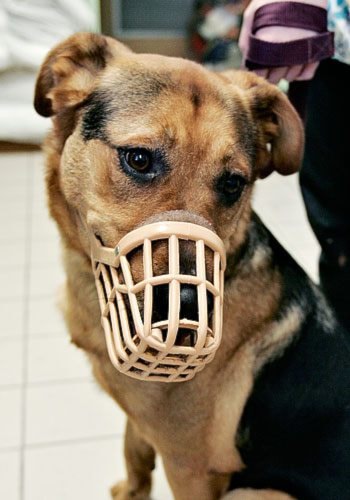A Whitehorse dog trainer who has worked in the field for more than 20 years said, with time, Trevor the dog can be fully rehabilitated.
Not all dogs can be rehabilitated - there are some mutts that, because of a “genetic flaw” or “prolonged environmental influence” aren’t recoverable and must be put down, said Erika Rozsa-Atkinson.
But this isn’t the case with Trevor, she said.
“Trevor has never been properly trained - he grew up with stress, strong nerves and he asserts himself because he’s never been taught he’s not the leader,” said Rozsa-Atkinson.
“This dog has problems, but his condition is not that severe that it can’t be worked on.”
Trevor became a national celebrity in July when a group of citizens tried to save him from being euthanized after he attacked several people.
In September, Trevor was assessed by Shelly Breadner, a Vancouver veterinarian and dog behaviouralist, who performed several tests on the dog to determine his potential for rehabilitation.
Trevor is a dangerous dog who will have to spend the rest of his life quarantined from normal social situations, said Breadner in her report.
However, that report was too vague to dictate whether rehabilitation is possible, Justice Ron Veale said during a Yukon Supreme Court hearing on Tuesday.
Now a conference call will be arranged with the Vancouver specialist to pin down exactly if Trevor will have to be put down.
But Rozsa-Atkinson questions Breadner’s assessment.
“She’s a veterinarian and behaviouralist - she works out of a book,” said Rozsa-Atkinson, who compared veterinarians to scientists rather than tradespeople.
Her observations were sharp, but her analysis of the situations was lacking, she said.
Rozsa-Atkinson has worked with Trevor on six different occasions, for several hours each time, at the Mae Bachur animal shelter.
She regularly volunteers there, working with dogs to make them more attractive to adopters.
Trevor was “excitable” and “very intense at times,” she said. But after running him around for two hours she could perform a test on him that proved he isn’t as aggressive as he’s being made out to be.
She placed Trevor in the middle of a circle with 16 dogs, each with their own dog handler.
When the dogs and dog handlers began to close in on Trevor, “nothing happened” and he “maintained his focus,” said Rozsa-Atkinson.
Trevor needs 18 months of training to become fully rehabilitated, she said. That fits the average amount of time needed for most dogs.
Ideally, Trevor would be placed in a dog handler’s home so they can work with him all the time. She knows of at least three dog trainers who have expressed interest, she said.
The way Trevor is being kept at the animal shelter right now is “abuse,” and that it is only increasing his propensity towards aggression, said Rozsa-Atkinson.
Trevor has to remain on a metre-long leash and has to wear a muzzle at all times.
“The dog is ready to explode,” said Rozsa-Atkinson explaining that Trevor, a Rottweiler/German Shepherd cross, needs a lot of exercise.
“I highly disagree with the three-foot leash. It’s the most outrageous thing I’ve heard of.”
Trevor lacked impulse control, wrote Breadner, after watching the leashed dog lunge towards a visitor.
However, all dogs lack impulse control unless they are taught, said Rozsa-Atkinson.
And testing such control in an untrained animal is akin to putting someone through a driver’s test when they’ve never been taught how to drive, she added.
“You can’t test something if (a dog) hasn’t been given the information to (carry out that task) - they’re going to fail.”
Trevor’s temperament may be aggressive at times, but it’s nothing that can’t be conditioned, said Rozsa-Atkinson.
She points to Trevor’s food drive, an aspect Breadner negatively highlighted in her assessment, as evidence that Trevor can be rehabilitated.
If a dog is not at all interested in food or a reward-based system of learning, then there’s a good chance the dog can’t be worked on, said Rozsa-Atkinson.
“With Trevor it is the opposite - he’s interested in food, toys and tugging. He’s an ideal dog because you don’t need to coax him to engage, he’s more than happy to.”
A strict program of exercise and a training regime that focuses on Trevor’s “prey cycle,” would be enough to control his impulses, the dog-trainer said.
Trevor is one of many dogs held by bylaw services who aren’t given the chance to improve their behaviour, said Rozsa-Atkinson.
“City bylaw services just puts down the iron curtain,” she said. “They don’t want dogs to get better, they just want to kill them.
“And this only creates a culture that (says) killing is OK.”
Contact Vivian Belik at
vivianb@yukon-news.com
